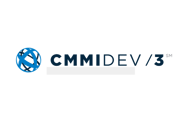While numerical metrics provide essential information, they often fail to capture human experiences, stakeholder perspectives, and underlying causes of complex societal problems.
Integrating scaled qualitative analysis into existing federal agency policy cycles presents an opportunity to address these limitations, offering richer, contextualized insights that can enhance policy effectiveness, equity, and responsiveness.
Key Concepts in the Federal Government Context
Workflow Integration: Connecting Systems and Processes
In government agencies, workflow integration refers to the automation and seamless connection of various stages and tasks within the policy cycle, including the incorporation of qualitative data collection, analysis, and dissemination processes with existing agency systems, databases, and personnel workflows.
Workflow integration focuses on optimizing the policy cycle itself. This involves analyzing and improving the sequence of tasks, the content and information used at each stage, and the supporting technology. The goal is to create a more streamlined and effective policy development process that enhances performance and organizational efficiency.
Qualitative Analysis: Depth at Scale
Scaled qualitative analysis in federal policy analysis involves systematically applying qualitative methodologies, often enhanced by technological tools, to analyze large volumes of non-numerical data. This data can include text from stakeholder consultations, public comments, interview transcripts, and social media, aiming to identify key themes, patterns, sentiments, and narratives that provide in-depth understanding of policy-related issues.
While traditional qualitative analysis often involves smaller datasets and manual interpretation, informing broad federal policies necessitates approaches that can handle larger scales while maintaining richness and depth of insights. This scaling can be achieved through structured manual coding processes, often guided by detailed coding schemes and manuals to ensure reliability and consistency across multiple analysts.
The integration of technological tools, such as AI and machine learning, plays a crucial role in enabling scaled qualitative analysis. AI can be used for automated evaluation of text quality, assessing factors like comprehensibility and appeal to target groups. Qualitative data analysis software provides functionalities for organizing, coding, and analyzing large datasets, facilitating identification of complex patterns and themes.
In some cases, a mixed-methods approach may be employed, where qualitative data is translated into quantitative formats, such as using rating scales to assess performance or progress in areas like governance and empowerment.
The goal of scaled qualitative analysis is to move beyond simply counting occurrences to understanding underlying reasons, motivations, and experiences related to policy issues, capturing lived realities of diverse populations and providing nuanced insights essential for effective and equitable policy development. The iterative nature of qualitative research, allowing for deeper probing into emerging themes, remains crucial even when analysis is conducted at scale.
Policy Cycles in US Federal Agencies: A Stage-Based Framework
The policy cycle in United States federal government agencies represents a recurring and often iterative process through which public policy is developed, implemented, and evaluated. While various models exist with differing numbers and names of stages, a common framework includes five key phases.
The first stage, Agenda Setting, involves identifying societal problems and deciding which issues warrant government attention and action. This stage is influenced by various factors, including public opinion, media coverage, and political actors' priorities.
The second stage, Policy Formulation, focuses on setting specific objectives for the policy and identifying potential solutions or courses of action to address the problem identified in the agenda-setting phase. This often involves research, analysis, and stakeholder consultation to develop viable policy options.
The third stage, Legitimation, involves gaining necessary political and legal support for the chosen policy option. This can include legislative approval, executive orders, or other forms of authorization that provide the policy with implementation authority.
The fourth stage, Policy Implementation, is when the policy is put into effect through government agencies and personnel actions. This stage can involve developing regulations, allocating resources, and establishing programs to carry out the policy's objectives.
The final stage, Policy Evaluation, involves assessing the implemented policy's effectiveness in achieving its intended goals and understanding its broader impacts. The findings from the evaluation stage can then feed back into the agenda-setting phase, potentially leading to policy revisions, adjustments, or new policy development to address remaining or emerging issues.
Some models also explicitly include a Decision-Making stage between formulation and implementation, as well as stages for Policy Maintenance, Succession, or Termination following evaluation. The process is not strictly linear but rather dynamic and cyclical, allowing for learning and adaptation over time.
|
Stage Name |
Description |
|
Agenda Setting |
Identifying problems and deciding which deserve attention |
|
Policy Formulation |
Setting objectives and identifying potential solutions |
|
Legitimation |
Gaining support and legal authority for the chosen policy |
|
Policy Implementation |
Putting the policy into effect through government agencies |
|
Policy Evaluation |
Assessing the policy's effectiveness and impact |
|
Decision-Making |
Selecting a specific policy solution |
|
Policy Maintenance, Succession, or Termination |
Deciding whether to continue, modify, or end the policy |
|
Consultation |
Seeking input from stakeholders |
Benefits of Integration: Enhancing Policy Outcomes and Engagement
Improved Policy Outcomes Through Richer Understanding
Integrating scaled qualitative analysis into federal policy cycles offers a significant opportunity to enhance policy outcomes by providing policymakers with more nuanced understanding of issues they aim to address. By moving beyond the often limited scope of purely quantitative data, qualitative methods allow exploration of complexities underlying societal problems, offering insights into citizens' lived experiences and diverse stakeholder perspectives. This richer understanding enables policymakers to identify root causes of problems and develop more targeted, effective policy interventions more likely to achieve desired outcomes.
Qualitative research provides a valuable lens for understanding how individuals experience programs and services in practice, offering critical feedback that can inform policy refinement and improvement. By capturing narratives and perspectives of those directly affected by policies, agencies can gain insights into potential unintended consequences and ensure policies are grounded in the realities of the communities they serve.
Furthermore, in a constantly evolving societal landscape, ongoing policy analysis informed by qualitative data is essential to ensure policies remain relevant, adaptive, and responsive to changing needs and circumstances. This deeper engagement with human dimensions of policy issues can lead to better resource allocation, increased policy legitimacy among the public, and ultimately, more meaningful positive impacts on society.
Enhanced Stakeholder Engagement and Inclusivity
Integrating scaled qualitative analysis into federal policy cycles can significantly enhance stakeholder engagement and promote inclusivity in the policymaking process. Qualitative methods, such as in-depth interviews, facilitated focus groups, and open-ended survey questions, provide powerful tools for gathering rich and detailed feedback from diverse stakeholders, going beyond the often limited scope of quantitative surveys. These approaches allow federal agencies to gain more nuanced and comprehensive understanding of the needs, perspectives, and concerns of those affected by proposed policies.
By actively seeking and incorporating stakeholder feedback through qualitative means, agencies can foster a stronger policy development processes, ensuring a wider range of voices are heard and considered. This engagement not only improves the quality and responsiveness of programs, projects, and initiatives but also cultivates better understanding, stronger relationships, increased buy-in, and greater overall support for policies among stakeholders.
Moreover, stakeholder analysis, a qualitative methodology, serves as a valuable tool for identifying key actors involved in the policy process and developing tailored strategies to effectively engage with them throughout the entire policy cycle, from agenda setting to evaluation. By prioritizing meaningful dialogue and capturing diverse opinions, federal agencies can build trust with stakeholders and develop policies more likely to be accepted and successfully implemented.
Deeper Insights into Societal Impacts
Scaled qualitative analysis offers invaluable opportunities for federal agencies to gain deeper insights into the societal impacts of their policies, particularly concerning equity and the experiences of marginalized groups. By focusing on the lived experiences and perspectives of diverse populations, qualitative methods can capture the depth and nuance of how policies affect individuals and communities, revealing issues that might remain hidden when relying solely on quantitative data.
This deeper understanding of societal impacts enables federal agencies to target interventions more effectively, ensuring that policies are designed and implemented in a manner that promotes fairness, opportunity, and overall well-being for all members of the population. The ability of qualitative research to uncover the 'why' behind observed disparities, going beyond simply identifying them through quantitative data, is essential for creating truly equitable policy outcomes.
Challenges and Obstacles to Integration
Navigating Data Collection Limitations in Qualitative Research
Integrating scaled qualitative analysis into federal policy cycles presents several data collection limitations that agencies must navigate. Compared to quantitative methods, collecting and analyzing qualitative data, especially at a large scale, can be significantly more time-consuming and resource-intensive, particularly for in-depth methods like individual interviews and ethnographic studies.
Another key consideration is that qualitative research typically does not aim for statistical representativeness in the same way that quantitative research does. Instead, it focuses on achieving deep and nuanced understanding of specific contexts and experiences, which might necessitate a shift in expectations for policymakers accustomed to statistically generalizable findings.
The process of collecting qualitative data is also susceptible to researcher bias, requiring careful attention to reflexivity and implementation of rigorous methodological approaches to minimize this potential influence. Furthermore, conducting effective qualitative fieldwork demands specialized skills in areas such as interviewing, facilitating focus groups, and making detailed observations, which may necessitate training for existing staff or hiring personnel with specific expertise in these methods.
Certain qualitative research methods, such as ethnographic research, can also be constrained by geographical factors, posing logistical challenges and requiring careful planning when data needs to be collected across diverse locations or from dispersed populations. Addressing these data collection limitations requires strategic planning, appropriate resource allocation, and clear understanding of specific research objectives and types of insights needed to inform policy decisions.
Addressing the Analytical Complexities of Scaled Qualitative Data
Analyzing large volumes of qualitative data introduces significant analytical complexities that federal agencies must be prepared to address. The sheer volume of data generated from scaled qualitative research can be overwhelming, making manual coding and thematic analysis time-consuming and labor-intensive.
Identifying meaningful patterns and overarching themes within extensive datasets can be a complex intellectual task, often requiring specialized qualitative data analysis software and computational text mining techniques. While these tools can greatly assist with data organization, coding, and pattern detection, they do not replace the need for skilled analysts who can provide nuanced interpretation and synthesize findings within the appropriate policy context.
Moreover, it is crucial to maintain a strong connection to the original data context during the analysis process to avoid oversimplification or misinterpretation, ensuring that the richness and complexity of the qualitative information are preserved in the final insights.
Managing Organizational Resistance and Fostering Adoption
Federal agencies attempting to integrate scaled qualitative analysis into their established policy workflows may encounter organizational resistance from various sources. Staff members more accustomed to and comfortable with quantitative methods might express skepticism about the perceived rigor, validity, and generalizability of qualitative findings. Resistance to change is common in organizational settings, and the introduction of new methodologies and tools can meet apprehension due to concerns about increased workload, the need to learn new skills, or perceived threat to existing practices and expertise.
Overcoming this potential resistance requires a proactive and strategic approach to change management. Clear and consistent communication about the benefits of integrating qualitative analysis, particularly in terms of its potential to enhance policy outcomes and improve stakeholder engagement, is essential. Providing adequate training and ongoing support for staff to develop necessary skills and build confidence in using qualitative methods will also be crucial for fostering widespread adoption.
Highlighting successful examples of other federal agencies that have effectively integrated qualitative analysis into their policy processes can help build credibility and demonstrate the practical value of this approach, showcasing tangible improvements in policy effectiveness and public responsiveness. Emphasizing that qualitative and quantitative methods are complementary, rather than mutually exclusive, can also help alleviate concerns and promote a more holistic and evidence-informed approach to policymaking within the agency.
Methodologies for Scaled Qualitative Analysis in Policy Cycles
Text Analysis: Uncovering Insights from Documents and Communications
Text analysis offers a range of methodologies suitable for federal agencies seeking to integrate scaled qualitative analysis into their policy cycles. Content analysis provides a foundational approach for systematically examining textual data content, such as policy documents, public comments, and stakeholder communications, to identify recurring themes, patterns, and meanings. This method allows for structured and rigorous interpretation of textual information relevant to policy issues.
Topic modeling, utilizing techniques like Latent Dirichlet Allocation (LDA), is a powerful unsupervised machine learning tool that can automatically discover underlying topics or themes within a large document collection. This can be particularly valuable for policymakers seeking to understand key issues and focus areas within extensive sets of public feedback or legislative documents.
Natural Language Processing (NLP) encompasses a broad array of computational techniques designed to analyze and understand human language. Within the policy context, NLP can be applied for various tasks, including entity recognition (identifying key individuals, organizations, and locations mentioned in text), sentiment analysis (gauging the emotional tone and public opinion expressed in text), and text summarization (automatically generating concise summaries of lengthy documents). These capabilities can significantly enhance efficiency in processing and interpreting large volumes of policy-related text data.
Text mining involves using software to automatically extract relevant information from textual sources, identify emerging trends, and uncover hidden relationships within large datasets. This approach can provide valuable data-driven insights for policy innovation and evaluation of existing policies. By employing these text analysis methodologies, federal agencies can systematically extract meaningful information from vast amounts of textual data they generate and receive, leading to more informed and evidence-based policymaking.
Sentiment Analysis: Gauging Public and Stakeholder Perceptions
Sentiment analysis offers valuable techniques for federal agencies to understand public and stakeholder perceptions of their policies and initiatives at scale. Lexicon-based sentiment analysis relies on a predefined dictionary of words, each associated with a positive, negative, or neutral sentiment score, to determine the overall emotional tone of a given text. This approach can provide a quick and relatively straightforward sentiment assessment.
Machine learning-based sentiment analysis involves training algorithms on large datasets of labeled text to automatically classify new text as positive, negative, or neutral. These algorithms, which can include techniques like Naive Bayes, Support Vector Machines (SVM), and deep learning models, often achieve higher accuracy, especially when dealing with nuanced language and context.
Aspect-based sentiment analysis provides more granular understanding of sentiment by identifying the specific aspects or features of a policy or issue being discussed and determining the sentiment expressed towards each. This level of detail can be particularly useful for pinpointing specific areas of concern or approval.
Real-time sentiment analysis allows continuous monitoring of public opinion as it unfolds, often by tracking social media posts, news articles, and other online sources. This capability can be critical for federal agencies to understand immediate public reactions to policy announcements or during unfolding events, enabling timely and informed responses. By leveraging these sentiment analysis techniques, federal agencies can effectively gauge public and stakeholder perceptions, identify potential concern areas, and tailor their communication and policy strategies accordingly.
Thematic Coding: Identifying Key Themes and Patterns
Thematic coding provides a systematic approach for federal agencies to identify, organize, and interpret recurring themes, ideas, and patterns within qualitative data related to policy issues. Inductive thematic coding involves deriving themes directly from the data itself, without imposing a pre-existing theoretical framework. This allows researchers to uncover unexpected patterns and gain deeper understanding of perspectives and experiences expressed by participants.
Deductive thematic coding begins with a pre-defined coding framework often based on existing theories, prior research, or specific research questions guiding the analysis. This approach can be more focused and efficient when there are specific areas of interest or hypotheses to be tested.
The process of manual coding involves researchers carefully reading through transcripts, interview notes, or other qualitative data and assigning codes or labels to text segments that represent significant themes or concepts. This method allows for nuanced interpretation and deep engagement with the data.
In contrast, automated coding utilizes software, often incorporating AI and machine learning capabilities, to automatically identify and apply codes to qualitative data based on predefined rules or patterns learned from training data. This approach can significantly accelerate the analysis of large datasets, making scaled qualitative analysis more feasible.
Regardless of whether manual or automated methods are used, establishing a clear and consistent coding framework, along with detailed code definitions and guidelines, is essential for ensuring the reliability and validity of the thematic coding process.
Other Relevant Qualitative Methodologies
Beyond text, sentiment, and thematic analysis, several other qualitative methodologies can be valuable for federal agencies seeking to integrate scaled qualitative analysis into their policy cycles. Narrative analysis focuses on understanding how individuals construct stories and narratives to make sense of their experiences with policies and programs. By examining the structure, content, and context of these narratives, policymakers can gain rich insights into the lived realities and perspectives of those affected by government actions, uncovering underlying motivations, values, and impacts that might not be evident through other methods.
Discourse analysis examines language use within its broader social and political context to uncover hidden power dynamics, prevailing ideologies, and underlying assumptions that may be embedded in policy documents, stakeholder communications, and public discourse. This methodology can help policymakers critically examine the language used to frame policy issues and understand how different perspectives are represented or marginalized.
Ethnographic methods involve researchers immersing themselves in a particular setting or community over an extended period to gain in-depth understanding of cultural norms, behaviors, and perspectives relevant to policy implementation and impact. This approach is particularly valuable for understanding the complexities of local contexts and the ways policies are experienced and interpreted on the ground.
By considering and potentially incorporating these diverse qualitative methodologies, federal agencies can choose the most appropriate approach for addressing specific policy questions and gaining the nuanced insights needed for effective and equitable governance.
Tools and Technologies for Government Workflows
Scalable Software Platforms for Qualitative Data Analysis
Federal agencies seeking to embed scaled qualitative analysis into their policy workflows have access to various sophisticated software platforms designed to support this endeavor.
NVivo stands out as a leading qualitative data analysis software, offering a comprehensive suite of features for organizing, coding, analyzing, and visualizing diverse forms of qualitative data, including textual documents, audio and video recordings, and images. It incorporates AI-powered functionalities for tasks such as thematic analysis and sentiment categorization, and provides collaboration tools enabling research teams to work together efficiently on projects.
MAXQDA is another highly regarded option, known for its user-friendly interface and robust capabilities for both qualitative and mixed methods research. It supports a wide range of data formats and offers powerful tools for text analysis, coding, and data visualization.
ATLAS.ti is recognized for its advanced features in qualitative data analysis, including sophisticated coding functionalities, network visualization tools for exploring relationships within data, and the ability to analyze multimedia data.
Beyond dedicated qualitative analysis software, the Qualtrics XM Platform, primarily known for its survey capabilities, also offers robust text and sentiment analysis features, allowing agencies to gather and analyze qualitative feedback from various sources and channels.
Platforms like DiscoverText provide collaborative text analytics solutions leveraging a combination of human expertise and machine learning algorithms, offering functionalities for data cleaning, coding, and developing custom machine classifiers.
When selecting a software platform, federal agencies must carefully consider factors such as the platform's ability to scale to handle large data volumes, the robustness of its security features to meet government compliance standards, and its overall ease of use for agency personnel, who may have varying levels of experience with qualitative analysis software.
Ensuring Data Security and Compliance within Government Standards
Data security and compliance are paramount considerations for federal agencies when selecting tools and implementing workflows for qualitative analysis. It is crucial to prioritize software platforms and workflows that adhere to stringent government data security standards to ensure robust protection of sensitive government information, including Personally Identifiable Information (PII).
Essential security features that agencies should look for include robust data encryption mechanisms, stringent access control measures to limit data access to authorized personnel, and comprehensive audit trails that track data handling and modifications throughout the analysis process.
Federal agencies must also establish clear and well-documented protocols for data handling and storage that fully align with relevant federal regulations and guidelines. It is imperative that all personnel involved in the collection, analysis, and storage of qualitative data are thoroughly trained on these security requirements and adhere to them consistently.
When considering cloud-based software platforms for qualitative analysis, agencies must carefully evaluate the security certifications held by these platforms to ensure they meet necessary government standards for data protection and can adequately safeguard sensitive information. By prioritizing data security and compliance at every integration process stage, federal agencies can maintain confidentiality and integrity of their qualitative data and uphold public trust.
Prioritizing User-Friendliness and Accessibility for Agency Personnel
The successful integration of scaled qualitative analysis into federal policy workflows is significantly influenced by the user-friendliness and accessibility of chosen tools and designed workflows for agency personnel. Selecting qualitative data analysis tools featuring intuitive and user-friendly interfaces is crucial for facilitating broad adoption, particularly among staff members who may not possess extensive technical expertise in qualitative analysis software. Platforms offering low-code or no-code functionalities can be especially beneficial in lowering entry barriers and making these tools more accessible to a wider user range.
Providing comprehensive training programs and readily available ongoing technical support is essential to empower agency staff to effectively utilize selected tools and methodologies in their day-to-day policy work. Furthermore, workflows should be thoughtfully designed to integrate seamlessly with existing agency processes and information technology systems, minimizing disruption to established routines and maximizing overall efficiency.
Accessibility considerations, including ensuring compliance with Section 508 standards for individuals with disabilities, are also vital to guarantee that chosen tools and workflows are usable by all agency personnel, regardless of their abilities. By prioritizing user-friendliness and accessibility, federal agencies can foster a more effective environment for incorporating qualitative insights into their policy cycles.
Presenting Qualitative Findings to Agency Leadership
Tailoring Communication Strategies for Secretaries, Administrators, and Directors
Communicating scaled qualitative analysis findings effectively to federal agency leadership, including Secretaries, Administrators, and Directors, requires a tailored approach recognizing their specific needs and constraints. Given the often demanding schedules and strategic focus of these leaders, communication strategies should prioritize conciseness, relevance, and actionability, ensuring key findings and their implications are presented clearly and efficiently, often right at the outset.
Presentations should be carefully tailored to address the specific concerns, priorities, and strategic objectives of the leadership audience, explicitly demonstrating the relevance of qualitative insights to current policy issues and the agency's overarching goals.
To enhance engagement and understanding, utilizing compelling narratives and real-world stories emerging from qualitative data can be significantly more impactful than simply presenting raw data or lengthy, detailed reports. Visual aids, such as well-designed summary charts, illustrative thematic maps, and concise infographics, can be highly effective in conveying complex qualitative findings in an easily digestible format that is quickly understood by executive audiences who often prefer high-level overviews.
Ultimately, the communication should culminate in clear and actionable recommendations directly derived from qualitative insights, providing agency leadership with a solid foundation for informed policy decisions at the highest levels.
Highlighting Relevance to Agency Priorities and Challenges
When presenting insights derived from scaled qualitative analysis to federal agency leadership, it is crucial to explicitly connect these findings to the agency's core mission, stated strategic goals, and specific operational challenges the agency currently faces. Employing case studies and carefully selected examples from qualitative data can effectively illustrate how research findings directly relate to and can inform the agency's efforts in addressing key priorities and challenges.
The communication should be framed to clearly demonstrate the practical value of qualitative analysis in providing deeper and more nuanced understanding of complex issues the agency is grappling with, as well as identifying potential solutions or areas for significant improvement.
Where appropriate and feasible, quantifying qualitative findings, such as by highlighting the frequency of certain key themes or the intensity of specific expressed sentiments, can help bridge the gap with leadership that may be more accustomed to quantitative data. This approach can effectively underscore the significance and prevalence of qualitative insights.
By making this explicit connection between qualitative analysis and the agency's core concerns, researchers can significantly increase the likelihood of gaining leadership's attention, fostering their buy-in, and ultimately influencing policy decisions with valuable qualitative evidence.
Visualizing and Synthesizing Qualitative Data for Executive Audiences
For executive audiences in federal agencies, who often have limited time and prefer high-level information, effective visualization and synthesis of qualitative data are paramount. Utilizing concise summary reports that condense the most critical findings and insights from qualitative analysis into an easily digestible format is essential. Employing visually engaging infographics to represent key themes, recurring patterns, and relationships identified within the data can make complex information more accessible and understandable at a glance. Developing well-structured and concise presentations, using a limited number of slides with clear headings and bullet points, is a highly effective way to convey the most important findings and any associated recommendations.
Synthesizing rich qualitative data into overarching themes and compelling narratives that capture the findings' essence and clearly articulate their implications for policy is also crucial. Leveraging data visualization tools often integrated within qualitative analysis software, such as word clouds highlighting frequently mentioned terms, thematic maps illustrating connections between different themes, and network diagrams depicting relationships between key concepts, can provide powerful visual representations of the data easily understood by executive audiences.
By prioritizing visualization and synthesis techniques, researchers can transform detailed qualitative information into clear, impactful summaries that effectively communicate key insights to agency leadership.
AEM's AI team stands out for our expertise in realizing the benefits of human-in the-loop approaches in deep learned systems, and we offer capabilities across a range of traditional ML areas. Contact us at ai@aemcorp.com to explore challenges your team is facing.















